-
 Bitcoin
Bitcoin $114000
-1.31% -
 Ethereum
Ethereum $3530
-4.15% -
 XRP
XRP $3.009
0.72% -
 Tether USDt
Tether USDt $0.9997
-0.04% -
 BNB
BNB $768.9
-1.48% -
 Solana
Solana $165.1
-2.83% -
 USDC
USDC $0.0000
0.01% -
 TRON
TRON $0.3274
0.13% -
 Dogecoin
Dogecoin $0.2032
-2.22% -
 Cardano
Cardano $0.7256
-0.54% -
 Hyperliquid
Hyperliquid $38.23
-6.27% -
 Sui
Sui $3.525
-1.60% -
 Stellar
Stellar $0.3893
-1.44% -
 Chainlink
Chainlink $16.23
-3.09% -
 Bitcoin Cash
Bitcoin Cash $542.3
-4.62% -
 Hedera
Hedera $0.2436
-2.80% -
 Avalanche
Avalanche $21.79
-2.00% -
 Toncoin
Toncoin $3.683
5.76% -
 Ethena USDe
Ethena USDe $1.000
-0.02% -
 UNUS SED LEO
UNUS SED LEO $8.967
0.39% -
 Litecoin
Litecoin $108.1
1.98% -
 Shiba Inu
Shiba Inu $0.00001225
-0.96% -
 Polkadot
Polkadot $3.617
-1.37% -
 Uniswap
Uniswap $9.120
-2.53% -
 Monero
Monero $297.5
-3.36% -
 Dai
Dai $0.0000
0.01% -
 Bitget Token
Bitget Token $4.328
-1.65% -
 Pepe
Pepe $0.00001060
-0.81% -
 Cronos
Cronos $0.1346
-3.39% -
 Aave
Aave $257.6
-0.87%
How to handle "internal transactions" in Coinbase Wallet?
Internal transactions in Coinbase Wallet, like token swaps or contract approvals, aren't always visible in-app but can be tracked via blockchain explorers like Etherscan.
Aug 01, 2025 at 11:21 pm
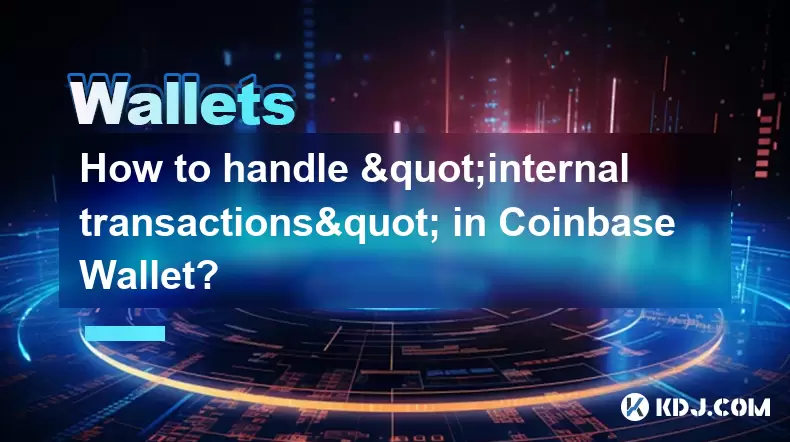
Understanding Internal Transactions in Coinbase Wallet
Internal transactions in Coinbase Wallet refer to movements of assets that occur between addresses within the same wallet or blockchain ecosystem, but are not recorded as standard on-chain transactions. These are often associated with smart contract interactions, token swaps, or transfers initiated through decentralized applications (dApps). Unlike regular transactions that involve direct transfers between external addresses, internal transactions may not appear in your transaction history at first glance, leading to confusion about missing funds or incomplete records.
It is essential to understand that internal transactions are not broadcasted to the blockchain in the same way as standard transfers. They are executed as part of a larger operation, such as a contract call or token approval, and may only be visible when inspecting the blockchain using a block explorer. This means that even though your wallet balance may reflect the change, the transaction details might not show up directly in the Coinbase Wallet interface unless you know where to look.
Locating Internal Transactions via Blockchain Explorers
To view internal transactions associated with your Coinbase Wallet, you must use a blockchain explorer such as Etherscan for Ethereum-based assets. Begin by copying your wallet’s public address from the Coinbase Wallet app. This address is visible on the main screen when you select the relevant network (e.g., Ethereum, Polygon).
- Open Etherscan.io or a compatible explorer for your blockchain network
- Paste your wallet address into the search bar and press Enter
- Navigate to the “Internal Transactions” tab, if available
- Review entries that match the time and amount of the suspected transaction
These internal movements will often show as CALL or CREATE operations from a contract address to your wallet or vice versa. The value displayed may be in wei (for Ethereum), so you may need to convert it to ETH or token units. Some internal transactions involve zero-value calls, which are used to trigger functions in smart contracts rather than transfer funds.
Interpreting Smart Contract Interactions
Many internal transactions stem from interactions with decentralized finance (DeFi) protocols or NFT marketplaces. When you stake tokens, provide liquidity, or mint an NFT, the wallet initiates a series of contract calls. These operations often generate internal transactions that adjust balances, approve spending, or execute token transfers behind the scenes.
For example, when you approve a token for use in a DeFi app, an internal transaction is created to allow the contract to spend your tokens. This does not move funds but sets an allowance. Later, when you withdraw or swap, another internal transaction executes the actual transfer. These steps are critical for security and functionality, but users may not see them reflected as “sent” or “received” in the wallet UI.
To verify these actions:
- Check the contract interaction history on Etherscan
- Look for "Write Contract" or "Token Approval" events
- Confirm the from and to addresses match your expectations
- Validate the gas fee and timestamp to ensure authenticity
Resolving Missing Balances Due to Internal Transactions
If your balance appears incorrect after a DeFi interaction or dApp usage, the issue may be related to unrecorded internal transactions. First, ensure your wallet is set to the correct network. Switch between Ethereum, Polygon, BSC, etc., depending on where the transaction occurred.
Next, manually trigger a balance refresh:
- Close and reopen the Coinbase Wallet app
- Tap on the affected asset to force a balance update
- Use the “Sync” or “Refresh” option if available in settings
If the balance remains inaccurate, go to the blockchain explorer and locate the internal transaction that altered your holdings. If the explorer confirms the change but the wallet does not reflect it, the token may not be automatically detected. In this case:
- Use the “+” button to add a custom token
- Enter the contract address, token symbol, and decimals from the explorer
- Save and verify the balance updates
This process ensures that tokens moved via internal transactions are properly displayed.
Security Considerations When Handling Internal Transactions
Internal transactions can be exploited by malicious actors through phishing contracts or fake dApps. Always verify the contract address before approving any token or initiating a swap. Scammers often create contracts that appear legitimate but drain your funds through hidden internal transfers.
To protect yourself:
- Never approve unlimited token allowances unless absolutely necessary
- Use the revoke.cash tool to cancel suspicious approvals
- Double-check the destination address in every transaction preview
- Enable wallet connect warnings and review all contract data
If you notice an unauthorized internal transaction, act immediately. Disconnect your wallet from all dApps, revoke token approvals, and consider transferring funds to a new wallet address.
Frequently Asked Questions
Why can’t I see an internal transaction in my Coinbase Wallet history?
Coinbase Wallet primarily displays standard on-chain transfers. Internal transactions resulting from smart contract logic are not always shown in the app’s transaction list. You must use a blockchain explorer like Etherscan to view them under the “Internal Transactions” or “Token Approvals” sections.
Can internal transactions steal my funds?
Internal transactions themselves do not steal funds, but they can be part of a malicious contract’s operation. If you approve a malicious contract to spend your tokens, it can initiate internal transfers to drain your wallet. Always verify contract addresses and limit approval amounts.
Do internal transactions cost gas?
Yes, gas fees are paid for the parent transaction that triggers the internal transaction. For example, when you interact with a DeFi protocol, the gas covers the entire operation, including any internal calls. You do not pay additional gas specifically for the internal movement.
How do I revoke a token approval that led to an internal transaction?
Go to revoke.cash, connect your Coinbase Wallet, and search for the contract address you wish to revoke. Select the token and click “Revoke.” This stops the contract from initiating future internal transactions involving your tokens.
Disclaimer:info@kdj.com
The information provided is not trading advice. kdj.com does not assume any responsibility for any investments made based on the information provided in this article. Cryptocurrencies are highly volatile and it is highly recommended that you invest with caution after thorough research!
If you believe that the content used on this website infringes your copyright, please contact us immediately (info@kdj.com) and we will delete it promptly.
- Ethereum's Rocky Climb: Analysts Eye New ATH Despite Recent Dip
- 2025-08-02 10:30:11
- Ethereum Price, ETF Inflows, and ETH Tokens: What's Driving the Market?
- 2025-08-02 10:50:12
- Ethereum, ADA, and Price Support: What's Next for These Crypto Titans?
- 2025-08-02 10:50:12
- XRP, Ripple, and Transfers: Decoding the Latest Moves
- 2025-08-02 11:10:12
- Injective (INJ) Price Analysis: Breakout or Breakdown?
- 2025-08-02 10:55:35
- Cardano Price, Pi Network, and Crypto Presales: What's the Buzz?
- 2025-08-02 08:50:12
Related knowledge

What is a watch-only wallet in Trust Wallet?
Aug 02,2025 at 03:36am
Understanding the Concept of a Watch-Only WalletA watch-only wallet in Trust Wallet allows users to monitor a cryptocurrency address without having ac...

How to switch between networks in Trust Wallet?
Aug 02,2025 at 12:36pm
Understanding Network Switching in Trust WalletSwitching between networks in Trust Wallet allows users to manage assets across different blockchains s...
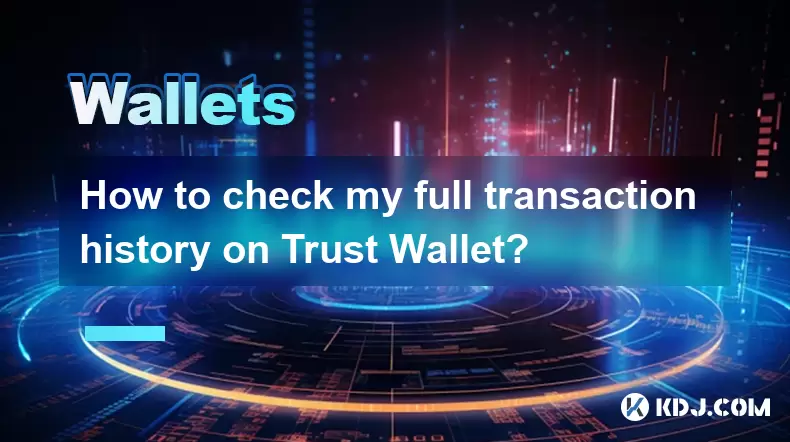
How to check my full transaction history on Trust Wallet?
Aug 02,2025 at 09:24am
Understanding Transaction History in Trust WalletTrust Wallet is a widely used non-custodial cryptocurrency wallet that supports a broad range of bloc...
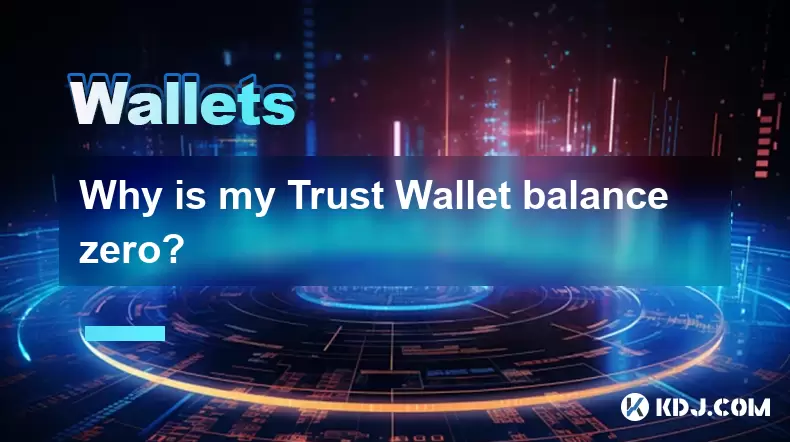
Why is my Trust Wallet balance zero?
Aug 02,2025 at 03:49am
Understanding Trust Wallet Balance Display IssuesIf you're seeing a zero balance in your Trust Wallet despite knowing you've previously received or se...
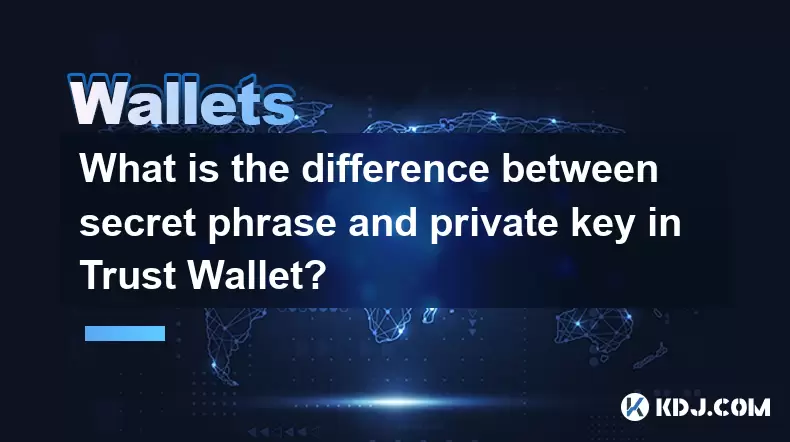
What is the difference between secret phrase and private key in Trust Wallet?
Aug 02,2025 at 09:49am
Understanding the Role of a Secret Phrase in Trust WalletThe secret phrase, also known as a recovery phrase or seed phrase, is a sequence of 12 or 24 ...
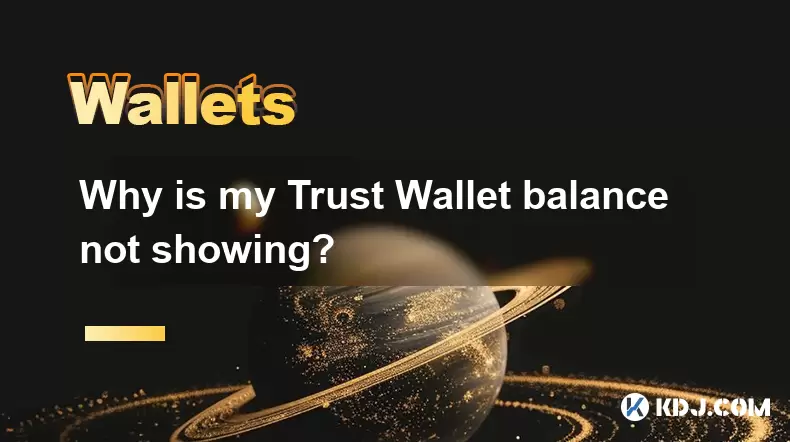
Why is my Trust Wallet balance not showing?
Aug 02,2025 at 06:01am
Understanding Trust Wallet Balance Display IssuesMany users encounter the issue where their Trust Wallet balance is not showing despite having previou...

What is a watch-only wallet in Trust Wallet?
Aug 02,2025 at 03:36am
Understanding the Concept of a Watch-Only WalletA watch-only wallet in Trust Wallet allows users to monitor a cryptocurrency address without having ac...

How to switch between networks in Trust Wallet?
Aug 02,2025 at 12:36pm
Understanding Network Switching in Trust WalletSwitching between networks in Trust Wallet allows users to manage assets across different blockchains s...

How to check my full transaction history on Trust Wallet?
Aug 02,2025 at 09:24am
Understanding Transaction History in Trust WalletTrust Wallet is a widely used non-custodial cryptocurrency wallet that supports a broad range of bloc...

Why is my Trust Wallet balance zero?
Aug 02,2025 at 03:49am
Understanding Trust Wallet Balance Display IssuesIf you're seeing a zero balance in your Trust Wallet despite knowing you've previously received or se...

What is the difference between secret phrase and private key in Trust Wallet?
Aug 02,2025 at 09:49am
Understanding the Role of a Secret Phrase in Trust WalletThe secret phrase, also known as a recovery phrase or seed phrase, is a sequence of 12 or 24 ...

Why is my Trust Wallet balance not showing?
Aug 02,2025 at 06:01am
Understanding Trust Wallet Balance Display IssuesMany users encounter the issue where their Trust Wallet balance is not showing despite having previou...
See all articles

























































































